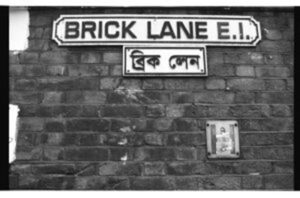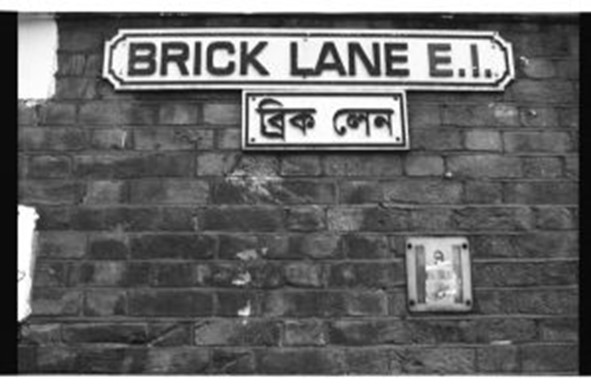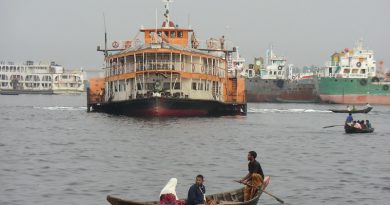The Bangladeshi Diaspora
The Bangladeshi diaspora is one of the largest in the world, with a population of over 7.5 million people. It is fairly evenly distributed around the world, with no country hosting an overwhelming majority. The largest diaspora population is in Saudi Arabia (over 1 million), with other major populations existing in the United Arab Emirates (700,000), the UK (450,000), Malaysia (221,000), Kuwait (150,000), Qatar (137,000), Italy (135,000), Oman (130,000) and Singapore (100,000). The diaspora has settled in a number of different regions, primarily for economic reasons. Bangladesh is one of the most densely-populated countries in the world and has struggled with considerable poverty, an issue exacerbated by its vulnerability to a wealth of natural disasters.
In the Western World, the United Kingdom is the largest Bangladeshi population hub. This is due to the former colonial ties between the two countries. The Bangladeshi population of the UK dates back to its beginnings as a British colony in the 19th Century. Sylheti cooks were the first Bangladeshis to arrive at the behest of the East India Company. The population was for many years relatively small and male-dominant. The population was very quick to assimilate as a result, with inter-marriage being highly prevalent during the early years of immigration. This however meant that a British Bengali community did not properly develop for several decades.
Bangladeshi immigration remained stagnant for much of the early 20th Century. It was not until the wake of the Second World War when it increased significantly. They mainly gravitated to London as well as major industrial hubs in the Midlands and the North. A major community began to develop in London’s East End, heavily concentrated around Brick Lane.

Brick Lane Sign, Whooba, Flickr Creative Commons
Again, these immigrants were predominantly male. As immigration restrictions were enacted in the 1970’s, a large number of Bangladeshi women and children arrived to reunite with their families, which saw communities develop more fully and on a larger scale. This was further increased by the outbreak and escalation of the Bangladesh Liberation War, which caused significant population displacement. The Bangladeshi diaspora in Britain played a pivotal role in the war, setting up a wealth of community organisations and liberation groups, partaking in activism. As the community expanded significantly during the 1970’s, a wealth of new businesses and restaurants were set up, particularly concentrated in the Brick Lane neighbourhood of East London.
Other major Bangladeshi hubs of the Western world include the United States, which has a large population in terms of size if not in terms of scale. The community is heavily based in the New York metropolitan area, with New York City and Paterson, New Jersey the central hubs. The population is overwhelmingly male with many immigrating for economic purposes. Canada also has a significant Bangladeshi community, the connection between the two countries existing through their mutual association with the Commonwealth. Italy is known for having one of Europe’s largest Bangladeshi communities, which constitute one of the country’s largest immigrant populations. It is a relatively recent phenomenon, having begun in large numbers in the 1980’s. Major cities such as Rome, Venice and Milan all have substantial populations and the population has steadily increased since the beginnings of the community.
The Bangladeshi diaspora, while one of the lesser prevalent in the Western world, is hugely present in Asian countries. The Middle East in particular has emerged as a major immigration destination. As mentioned above, Saudi Arabia is home to the largest Bangladeshi diaspora in the world while the United Arab Emirates, Kuwait and Oman all have large communities. An overwhelming majority of these immigrants work in the professions of day labourers and guest workers. Due to the lack of major opportunities in Bangladesh, the majority of its recent immigrants are those seeking a better living elsewhere, which has coincided with the ascendancy of the Arab Gulf States. They are known for their poor living conditions, something which human rights organisations have widely condemned as the countries abuse their desperate status for economic gain.
Similarly, Bangladeshis are prevalent as a cheap, foreign labour source in East Asian countries such as South Korea and particularly Asia. Due to Bangladesh’s cultural overlap with the Bengali Indian population, assimilation in Malaysia (which boasts a substantial Indian population) has been easier than elsewhere. The two countries share a historical connection stretching back several centuries. Large-scale immigration has been fairly recent although a number of Bangladeshis were forcibly resettled during their time as British subjects. Since the 1980’s, Bangladesh has been a major supply of foreign labour in Malaysia, particularly in plantations and construction. South Korea, a notably hegemonous country, also has a small yet noticeable Bangladeshi community, again largely centred in labour. They have suffered significant oppression and prejudice in the country.
The Bangladeshi diaspora is one of the most frequently abused in the world, with few communities being able to form (the United Kingdom being a notable exception). The community is often taken advantage of due to the economic and socio-political distress at home. The vast majority of Bangladeshi immigrants are economic migrants and their desperation has been mercilessly taken advantage of in a number of countries.
Main image: Parfett Street, Whitechapel E1, al cane, Flickr Creative Commons.




